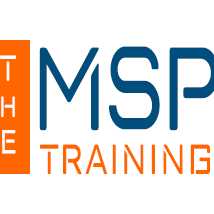CISSP Certified Information Systems Security Professional course provides complete knowledge to the delegates about the basics of telecommunication, network security concepts, components for reducing the security risks, securing channels of communication, and detecting network-based attacks.
With the help of this training, the delegates will understand how to describe and apply Risk Management Framework and information security governance.
CISSP Certified Information Systems Security Professional course is designed to provide complete knowledge and skills to design, organise and manage IT security programs. With the help of the training, the delegates will able to define the architecture, design and management of the security of an organisation. The delegates will learn about the components, principles and system security techniques.
- Analyze components of the Security and Risk Management domain
- Gain the required skills to design the architecture and manage IT security in an enterprise environment
- Gain Knowledge from Certified and well-experienced Instructors
- We provide 24 x 7 help and support to our delegates in case of any query
You Will Learn:
- During the Certified Information Systems Security Professional course, the delegates will be able to:
- Understand access control systems and methodology
- Understand how to apply application and systems development security
- Understand security architecture and models
Course Content:
- Security and Risk Management
- Understand and Implement Concepts of Confidentiality, Availability and Integrity
- Implement Security Governance Principles
- Introduction to Compliance
- Understand Legal and Regulatory Issues that Pertain to Information Security in a Global Context
- Understand Professional Ethics and Business Continuity Requirements
- Contribute to Personnel Security Policies
- Understand and Apply Risk Management and Threat Modelling Concepts
- Develop and Implement Documented Security Policy, Standards, Guidelines and Procedures
- Establish and Manage Information Security Education, Training, and Awareness
- Integrate Security Risk Considerations into Acquisition Strategy and Practice
- Security Engineering
- Essential Concepts of Security Models
- Implement and Manage Engineering Processes using Secure Design Principles
- Select Controls and Countermeasures Based Upon Systems Security Evaluation Models
- Understand Security Capabilities of Information Systems
- Assess and Mitigate the Vulnerabilities of Security Architectures, Designs, and Solution Elements
- Assess and Mitigate the Vulnerabilities in Mobile Systems and Web-Based Systems
- Assess and Reduce Vulnerabilities in Embedded Devices and Cyber-Physical Systems
- Apply Cryptography
- Design and Implement Physical Security
- Apply Secure Principles to the Site and Facility Design
- Overview of Asset Security
- Classify Supporting Assets and Information
- Understand about Protect Privacy
- Determine and Maintain Ownership
- Ensure Appropriate Retention
- Determine Data Security Controls
- Establish Handling Requirements
- Identity and Access Management
- Control Physical and Logical Access To Assets
- Manage Identification and Authentication of People and Devices
- Integrate Identity as a Service
- Integrate Third-Party Identity Services
- Implement and Manage Authorisation Mechanisms
- Manage the Identity and Access Provisioning Lifecycle
- Prevent or Mitigate Access Control Attacks
- Overview of Communication and Network Security
- Apply Secure Design Principles to Network Architecture
- Secure Network Components
- Design and Establish Secure Communication Channels
- Prevent or Reduce Network Attacks
- Security Operations
- Understand and Support Investigations
- Understand Requirements for Investigation Types
- Conduct Logging and Monitoring Activities
- Secure the Provisioning of Resources
- Understand and Apply Foundational Security Operations Concepts
- Employ Resource Protection Techniques
- Conduct Incident Management
- Operate and Maintain Preventative Measures
- Security Assessment & Testing
- Design and Validate Assessment and Test Strategies
- Conduct Security Control Testing
- Collect Security Process Data
- Analyse and Report Test Outputs
- Understand the Vulnerabilities of Security Architectures
- Software Security Development
- Understand and Implement Security in the Software Development Lifecycle
- Enforce Security Controls in Development Environments
- Assess the Effectiveness of Software Security
- Assess Security Impact of Acquired Software
